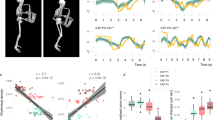Abstract
This paper investigates how expressive gestures of a professional clarinetist contribute to the perception of structure and affect in musical performance. The thirty musically trained subjects saw, heard, or both saw and heard the performance. All subjects made the same judgments including a real-time judgment of phrasing, which targeted the experience of structure, and a real-time judgment of tension, which targeted emotional experience.
In addition to standard statistical methods, techniques in the field of Functional Data Analysis were used to interpret the data. These new techniques model data drawn from continuous processes and explore the hidden structures of the data as they change over time.
Three main findings add to our knowledge of gesture and movement in music: 1) The visual component carries much of the same structural information as the audio. 2) Gestures elongate the sense of phrasing during a pause in the sound and certain gestures cue the beginning of a new phrase. 3) The importance of visual information to the experience of tension changes with certain structural features in the sound. When loudness, pitch height, and note density are relatively low, the effect of removing the visual component is to decrease the experience of tension.
Preview
Unable to display preview. Download preview PDF.
Similar content being viewed by others
References
Aiello, R.: Music and Language: Parallels and Contrasts. In: Aiello, R., Sloboda, J. (eds.) Music Perceptions, pp. 40–63. Oxford University Press, NewYork (1994)
Clarke, E.F., Krumhansl, C.L.: Perceiving Musical Time. Music Perception 7, 213–252 (1990)
Davidson, J.: Visual Perception of Performance Manner in the Movements of Solo Musicians. Psychology of Music 21, 103–113 (1993)
Delalande, F.: La Gestique de Gould. Glen Gould Pluriel, pp. 85–111. Louse Courteau, editrice, inc. (1988)
Deliège, I., El Ahmade, A.: Mechanisms for Cue Extraction in Musical Groupings: A Study of Perception on Sequenza VI for Viola Solo by Luciano Berio. Psychology of Music 18, 18–44 (1990)
Fredrickson, W.E.: A Comparison of Perceived Musical Tension and Aesthetic Response. Psychology of Music 23, 81–87 (1995)
Fredrickson, W.E.: Elementary, Middle, and High School Student Perceptions of Tension in Music. Journal of Research in Music Education 45(4), 626–635 (1997)
Fredrickson, W.E.: Effect of Musical Performance on Perception of Tension in Gustav Holst’s First Suite in E-flat. Journal of Research in Music Education 47(1), 44–52 (1999)
Fredrickson, W.E.: Perception of Tension in Music: Musicians versus Nonmusicians. Journal of Music Therapy 37(1), 40–50 (2000)
Krumhansl, C.L.: A Perceptual Analysis of Mozart’s Piano Sonata K. 282: Segmentation, Tension, and Musical Ideas. Music Perception 13(3), 401–432 (1996)
Krumhansl, C.L.: An Exploratory Study of Musical Emotions and Psychophysiology. Canadian Journal of Experimental Psychology 51(4), 336–352 (1997)
Krumhansl, C.L., Schenck, D.L.: Can dance reflect the structural and expressive qualities of music? A perceptual experiment on Balanchine’s choreography of Mozart’s Divertimento. Musicae Scientiae 15, 63–85 (1997)
Levelt, W.J.M.: Speaking: From Intention to Articulation. MIT Press, Cambridge (1989)
Madsen, C.K., Fredrickson, W.E.: The Experience of Musical Tension: A Replication of Nielsen’s Research Using the Continuous Response Digital Interface. Journal of Music Therapy 30(1), 46–63 (1993)
McFarland, D.H.: Respiratory Markers of Conversational Interaction. Journal of Speech, Language, and Hearing Research 44(1), 128–143 (2001)
Nielsen, F.V.: Oplevelse af misikalsk spending (The experience of musical tension). Akademisk Forlag, Copenhagen (1983)
Ramsay, J.O., Silverman, B.W.: Functional Data Analysis. Springer, New York (1997)
Wanderley, M.M.: Non-Obvious Performer Gestures in Instrumental Music. In: Braffort, A., Gherbi, R., Gibet, S., Richardson, J., Teil, D. (eds.) Gesture-Based Communication in Human-Computer Interaction, pp. 37–48. Springer, Heidelberg (1999)
Wanderley, M.M., Depalle, P.: Gesturally Controlled Digital Audio Effects. In: Proceedings of the COST-6 Conference on Digital Audio Effects (DAFx-01). Limerick, Ireland, pp. 165–169 (2001)
Wanderley, M.M.: QuantitativeAnalysis of Non-Obvious Performer Gestures. In: Wachsmuth, I., Sowa, T. (eds.) Gesture and Sign Language in Human-Computer Interaction, pp. 241–253. Springer, Heidelberg (2002)
Author information
Authors and Affiliations
Editor information
Editors and Affiliations
Rights and permissions
Copyright information
© 2004 Springer-Verlag Berlin Heidelberg
About this paper
Cite this paper
Vines, B.W., Wanderley, M.M., Krumhansl, C.L., Nuzzo, R.L., Levitin, D.J. (2004). Performance Gestures of Musicians: What Structural and Emotional Information Do They Convey?. In: Camurri, A., Volpe, G. (eds) Gesture-Based Communication in Human-Computer Interaction. GW 2003. Lecture Notes in Computer Science(), vol 2915. Springer, Berlin, Heidelberg. https://doi.org/10.1007/978-3-540-24598-8_43
Download citation
DOI: https://doi.org/10.1007/978-3-540-24598-8_43
Publisher Name: Springer, Berlin, Heidelberg
Print ISBN: 978-3-540-21072-6
Online ISBN: 978-3-540-24598-8
eBook Packages: Springer Book Archive




